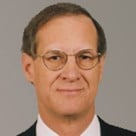TALF, PPIP, TARP and the real politics behind themWe no longer hear the media and politicians talking much about toxic assets and restarting securitization. The reality is all of this was pure politics. In late 2008 Paulson and Bernancke had to make a dramatic move to prove that the government was going to essentially guarantee the soundness of the financial system, or we would have had a complete collapse in November, 2008. TARP was designed to do that and it worked. Other than Citi and GMAC, nobody really needed the capital. It was all designed to send a giant message. The stress tests were designed to do the same. Treasury and the Fed knew the outcome before they ever proposed the tests, or they never would have done it. The regulators had all the numbers. The tests were set to be able to say things are OK, and to be able to force the big banks to raise added capital. It was designed to be another confidence builder.PPIP and TALF were both purely political programs specifically designed to sound good, do a tiny bit, but to essentially fail quietly. Anyone who thinks these programs were designed to really do anything, simply does not understand what was really going on behind the curtain. The government needed to look like it had answers and was taking action. In early 09 Volker and others pressed for RTC 2 instead.A number of people in Wall St attribute the substantial narrowing of CMBS spreads to TALF. If CMBS spreads had narrowed and no other spreads had done so, then one could make the argument. However, all spreads, across most of the world, also came in substantially around the same time, and that had nothing at all to do with TALF. The reality is the markets calmed and investors and traders were much more willing to move out the risk curve fairly rapidly once it was clear the world was not ending and governments around the world were not going to allow the system to crash. TALF had little to do with spreads narrowing-it was coincidence. Spreads were going to come in anyway. All TALF did was accelerate the timing of the narrowing for CMBS. Securitzation will restart when the markets are ready to accept the paper and underwriting is reset to reflect reality. TALF is not relevant.Even though a few PPIP programs were set up, we hear nothing of them any longer. Debt is being issued without TALF. Hardly anyone wants to be bothered dealing with the hassle that comes with it. The markets are now willing to buy the non-TALF paper, which is exactly what Treasury counted on. The political gamble worked.The real inflection points in all this were two major events. The first was the big bank CEO meeting with Obama in March when they essentially told him to stop bashing the banks, or he would create worse problems. You can closely correlate the turn in the equity markets to that day. Obama still has not got the full message. The second was the disgraceful media circus when Barney Frank and his band of clowns held a made for TV spectacle to use Liddy as a punching bag. After the Liddy political theater, nobody wanted anything to do with government funding ever again if they could avoid it. Barney Frank has done more damage to the system than almost anyone. He protected Fannie and Freddie and Raines, and he has now made it clear nobody should deal with the government if they can avoid it, unless you are a union, then you get taken care of as was the UAW, and now all unions with healthcare.As always, markets correct themselves and revert to the mean. There is a group of traders in every situation who are able to see past the chaos, and will step in to bid when they perceive the price to be irresistible. A base is formed and then others follow. Spreads come in, the early actors make a killing, and markets start to function again. This was no different. Now the markets will be in a more normal trading range.
© Touchpoint Markets, All Rights Reserved. Request academic re-use from www.copyright.com. All other uses, submit a request to [email protected]. For more inforrmation visit Asset & Logo Licensing.







